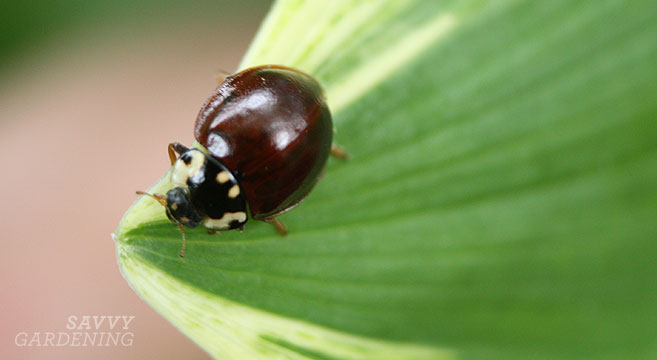This post may contain affiliate links. If you make a purchase through links on our site, we may earn a commission.
Over 30 years ago, three native ladybug species, the 9-spotted, the 2-spotted, and the transverse ladybug, were very common across Eastern North America. But, starting in the late 1980s, their numbers began to decline. In fact, the 9-spotted ladybug, New York’s state insect, hadn’t been spotted in the state in well over 20 years! One of the most common ladybug species in the Northeastern U.S. had seemingly vanished, only to be found in sparse populations in parts of the Mid-West.
While the numbers of these and other native ladybug species were dropping, the populations of two introduced species, the Mulitcolored Asian ladybug and the 7-spotted ladybug were really taking off and doing quite well. The timing of the population shifts was suspicious and scientists wanted to know why it was happening.
In 2000, Dr. John Losey, an entomology professor at New York’s Cornell University, founded The Lost Ladybug Project in hopes of using citizen science to help track the numbers and locations of different ladybug species in the state. Master gardener, school, and community groups began to take part in ladybug population surveys in 2004 by searching for and photographing every ladybug they could find. Since its inception, The Lost Ladybug Project has collected over 25,000 images from across the U.S. and Canada, creating an incredible database of ladybug populations and distribution.
The Project also performs lab tests to help determine the reasons why our native ladybug species are in decline. The results of these tests have led researchers to believe that our native species are getting “out competed” by the introduced ones. Part of the reason for this is because the introduced species are quicker to reproduce and because they eat more (including eating the native ladybugs themselves!). Dr. Losey and his team aren’t sure why there has been such a quick decline in the native species, but they suspect that competition is a big part of the equation.

In 2006, a year after starting the national survey, a pair of kids found a 9-spotted ladybug in Virginia–proof that the species still exists in the East. Then, in the summer of 2011, a group of people participating in a ladybug search sponsored by a local land trust, struck gold: They found the first 9-spotted ladybug in New York State in 20+ years! It was discovered on an organic farm, and the researchers who returned to the farm later that season, found a whole colony of 9-spots. They were unable, though, to find any others after searching several surrounding farms, and none have been reported in the state since.
Because of the help of interested citizens, the Lost Ladybug Project has one of the largest and most geographically widespread ladybug databases in existence, and with it, they have confirmed the recent shift in ladybug populations across North America. They have discovered that just over half of the ladybugs found in North America are foreign species, with the Multicolored Asian ladybug being the dominant species. In order to continue tracking ladybugs across North America, The Lost Ladybug Project needs help. Individuals and groups should take pictures of each and every ladybug they find, regardless of the species, and upload them to the website. They even want photos of the introduced species so they can see how prevalent they are.

To learn more about The Lost Ladybug Project and to submit pictures of your own discoveries, go to their website: www.lostladybug.org. Entering my name, Jessica Walliser, when searching the contributor list will show you nine different species of ladybugs I’ve found in my own suburban backyard over the last two years.
Note: The main image is of a 15-spotted ladybug. (As a youngster, this species is grey with 15 spots, but as it ages, it changes to this beautiful burgundy color.)
Pin it!




I found a dark 9-spotted ladybeetle on our small acreage, restoration prairie & savanna, Milan, IL. Photo attachhed
Hello Tami Schmidt. Please upload ladybug photo here: http://www.lostladybug.org/form/page-1-form-558.php We will write you back. Thanks!
I can’t find an attachment option to attach the photo.